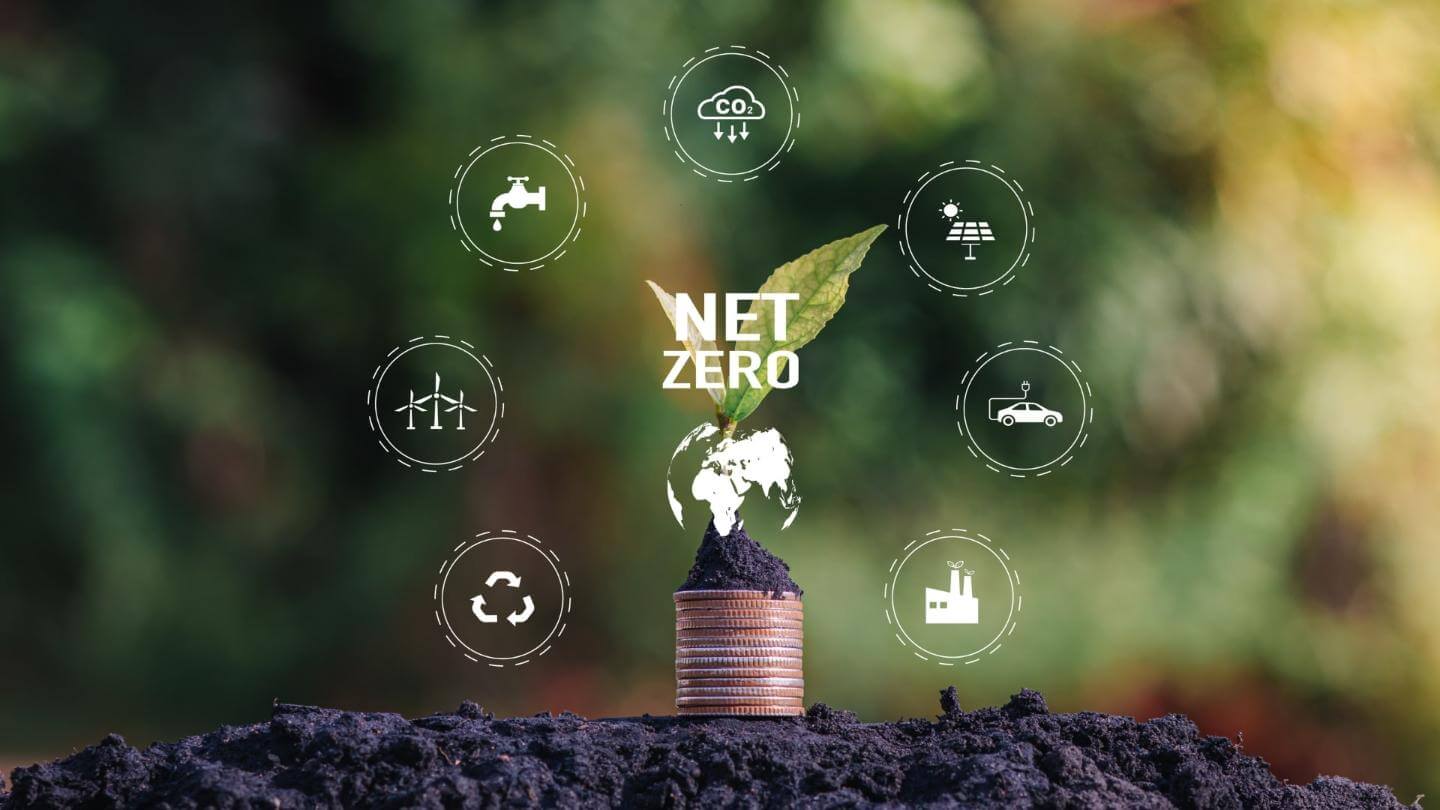Environmental, Social, and Governance (ESG) was rated as the top long-term investment priority by CFOs, according to a “CFO Outlook” survey run by Ernst & Young. How to progress on ESG has been a major topic of discussion across industries and sectors.
Many companies are already making changes. Shibumi’s 2024 Strategic Portfolio Management Benchmark Report found that 60% of surveyed organizations are undergoing sustainability transformation. Here are some strategies to fast-track your ESG success to keep your company competitive.
Why It’s Crucial for Companies to Focus on ESG
ESG is becoming increasingly important for companies to focus on for numerous reasons. For many organizations, it impacts their financial standing, stock price, and ability to borrow at favorable interest rates, as investors and banks know that ESG risks impact a company’s financial performance. Investors want companies to disclose their ESG risks in a more standardized way – so investors can accurately evaluate and compare companies’ financial performance.
Companies are considering brand and customer loyalty factors as well. ESG impacts a company’s reputation and can be a major part of standing out among competitors and forming trusted relationships with customers and communities.
There are also many legal and regulatory reasons for companies to embed ESG strategy into their business operations and to improve ESG reporting. In 2024, several significant sustainability and climate disclosure laws and regulations are in effect worldwide, including the EU Corporate Sustainability Reporting Directive (CSRD), which applies to approximately 50,000 companies, including many headquartered outside the EU (estimate from the European Commission). This reflects a growing global emphasis on environmental accountability and transparency.

Strategies for Being Proactive with ESG
Actions speak louder than words. Making a few broad statements about your ESG aspirations is not enough. To make and demonstrate real progress on ESG goals, companies must be proactive about their ESG initiatives. Here are some strategies for companies wanting to make meaningful progress:
- Understand your material risks. Understanding your material risks through a materiality assessment is the first step. Conducting materiality assessments is essential for identifying and prioritizing the ESG issues especially critical to your organization and industry. A materiality assessment is designed to help you identify and understand the relative importance of specific ESG and sustainability topics to your organization. If you’re new to climate risks, the EPA provides a helpful guide covering different types of climate risks and opportunities (see Climate Risks and Opportunities Defined). ConserviceESG’s Materiality Assessment, Workiva’s Interactive Materiality Assessment, and Envoria’s article are solid guides for conducting an ESG materiality assessment.
- Stay a step ahead of requirements. Implement investor-grade ESG reporting ahead of SEC requirements. The SEC has proposed new rules requiring companies issuing securities in the U.S. to disclose their greenhouse gas emissions and climate change risk mitigation actions in their 10-K reports. The proposed rules haven’t been passed into law yet but will likely pass in 2024. To be compliant, companies should expect the rules to be finalized, start collecting data about their greenhouse gas emissions, and thoroughly identify the risks a changing environment poses to their operations.Generating investor-grade ESG reports may require your organization to strengthen its data collection and reporting capabilities and invest in digital tools and automation to support ESG initiatives, such as ESG data management and reporting tools or risk registers that track your company’s material ESG risks and risk mitigation activities. You may also consider using SPM software like Shibumi to align ESG initiatives with your company’s overall business strategy, develop targets for the initiatives, and manage ESG initiatives through their entire lifecycle from ideation to benefit realization.
- Invest in continuous improvement. As you examine your company’s operations, a good starting place for implementing continuous improvement processes is within your crucial functions and departments. Educate and train employees to ensure everyone understands the company’s ESG ambitions and ask them to generate ideas that they can implement within their individual roles/functions to advance company goals. Involving frontline and mid-management employees is vital if you want your continuous improvement efforts to become part of your company culture. For example, consulting firm Wolters Kluwer worked with a global leader in pharmaceutical manufacturing on continuous improvement efforts. Together, they implemented processes that enhanced visibility, simplified data entry, and streamlined report generation for greenhouse gas emissions. The continuous improvement programs helped the pharmaceutical company make step-by-step advancements, which reduced its greenhouse gas emissions by 17% and lowered total energy consumption by 6%.
- Use your influence for good. If you are part of a sizable company, use your size and leverage to impact your industry by setting a positive example and shaping the behavior of suppliers, customers, and competitors. Whole Foods is a leader in this area. Each year, the company releases a transparent ESG report that shares its inspiring metrics of community impact, people impact, climate impact, and product sourcing. Specifically, Whole Foods partners with organizations like Bloomia, which supports higher wages for farmers; EARTH University, a nonprofit that funds scholarships for students to study environment-related topics; and organizations like Fair Trade USA and Rainforest Alliance, which promote sustainable production.
- Find opportunities within your supply chain. Examine your suppliers and technology providers to find who can help accelerate your sustainability efforts, especially reducing carbon emissions. Examine suppliers’ CO2 emissions (and any other environmental impact measures that matter to your company) and work with suppliers committed to achieving sustainability goals.If you are in an industry where most of your total carbon emissions come from suppliers and supply chain partners, make goals to reduce your Scope 3 emissions. An excellent case study of this is tech giant Dell. Dell is proactively preparing for the reporting requirements of the European Union’s Corporate Sustainability Reporting Directive (CSRD) regulatory regime by aggregating greenhouse gas emissions, including supply chain emissions.
Key Actions Companies Should Take to Make and Demonstrate Progress on ESG

Once you’ve identified your goals, it’s time to drill down to the nitty-gritty and show concrete results. While the specific actions that will make an impact will vary by each company’s focus areas and scale, we wanted to provide you with a bank of ideas to start with. Here are some industry-agnostic, highly impactful practices and actions companies may consider taking to fast-track their ESG progress while improving their operational and cost efficiency.
Meaningful actions to reduce waste
- Optimize manufacturing processes through means such as automation, improving personnel training, standardizing work, and identifying and resolving bottlenecks.
- Implement circular economy principles. Walmart uses circular economy principles to drive its ESG goals for reducing packaging, diverting waste from landfills and incineration facilities, preventing food waste, and improving consumer recycling.
- Create new product designs to manufacture products with fewer/greener materials and/or require less assembly and shipping. Nike is a leader in innovative product designs for its sneakers, which resulted in lighter sneakers that could be made in fewer steps with a shorter production cycle and savings in shipping costs.
- Implement waste sorting and recycling programs. Unilever has programs to support its goals of 100% of its plastic packaging designed to be fully reusable, recyclable, or compostable and 25% recycled plastic in its packaging.
- Establish a net-zero policy. A net-zero policy is a plan for a company to reach the point where its greenhouse gasses going into the atmosphere are balanced by removal from the atmosphere. Consulting leader PwC releases annual progress updates on its journey toward net zero. PwC started sourcing electricity only from renewable energy sources, upgraded to LED lighting in many buildings, and changed schedules so cleaning crews clean during daytime hours. These changes have led to a 20% reduction in their Energy Usage Intensity (EUI).
Meaningful actions to increase energy efficiency:
- Conduct regular energy audits of your facilities and use the findings to determine what will make a large difference (e.g., switch to energy-efficient lighting options, improve insulation in buildings, etc.).
- Invest in a smart thermostat and heating and cooling system. One of the largest hotel chains in the UK implemented a smart thermostat and HVAC system. The change was more energy efficient, cutting ~37,000 kWh annually with a 22% reduction in energy consumption and the chain approximately £86,181 yearly.
- Educate employees on ways their small actions can make a big impact on company energy consumption. For instance, help employees be more thoughtful about when they need to travel vs. when they can work remotely.
- Adopt renewable energy sources. Consider installing solar panels on your buildings and sourcing electricity only from renewable energy sources.
Meaningful actions to promote diversity and inclusion:
- Compare your employee demographics with those in your local areas. Accenture worked with IKEA on a DEI program, which included gathering HR data for IKEA U.S. employees and comparing the results with U.S. Census data in various geographic areas. The results revealed that IKEA employees did not represent the makeup of local populations in the areas they operated in. Getting a finding like this can be the catalyst for your leaders to commit to building a more reflective workforce representative of the communities in which you operate.
- Create an inclusive leadership development program. John Deere has a great roadmap to follow. They implemented a manager-led employee education program with DEI discussion groups as well as an Inclusive Leadership Development Program for all managers and supervisors. Additionally, John Deere started celebrating holidays such as Diwali, R U OK Day, and other diverse awareness days.
- Offer employee caregiver benefits. Pharma giant Merck worked with Wellthy to create a caregiver program that matches caregiving employees with a dedicated Care Coordinator who can help schedule appointments, source, and vet in-home aides, coordinate moving to a care facility, and research insurance bills. In less than two years, Merck saw great results: an estimated 166,142 hours were saved by employees, and 94% of caregiving employees reported feeling less stressed and more engaged at work. Additionally, 64% missed fewer meetings and work days because of this benefit.
- Work with contractors and suppliers that support minorities and marginalized people groups and prioritize DEI within their own organizations. Cook Medical, a global medical device company, contracts with Stone Belt, an organization that supports individuals with mental and physical disabilities. Stone Belt has manufactured more than 5 million medical device supplies for Cook.
The Role of Shibumi in Accelerating ESG Progress
Feeling stuck in creating more concrete ESG goals? Shibumi can accelerate your ESG progress. Our software is designed to guide chief sustainability officers and other executives as they create alignment between ESG initiatives and their business goals and ESG initiatives. We help you stay focused in executing ESG initiatives by providing a place for you to manage business cases, allocate resources, set a roadmap with key milestones, and measure progress and impact. Request a demo today.

